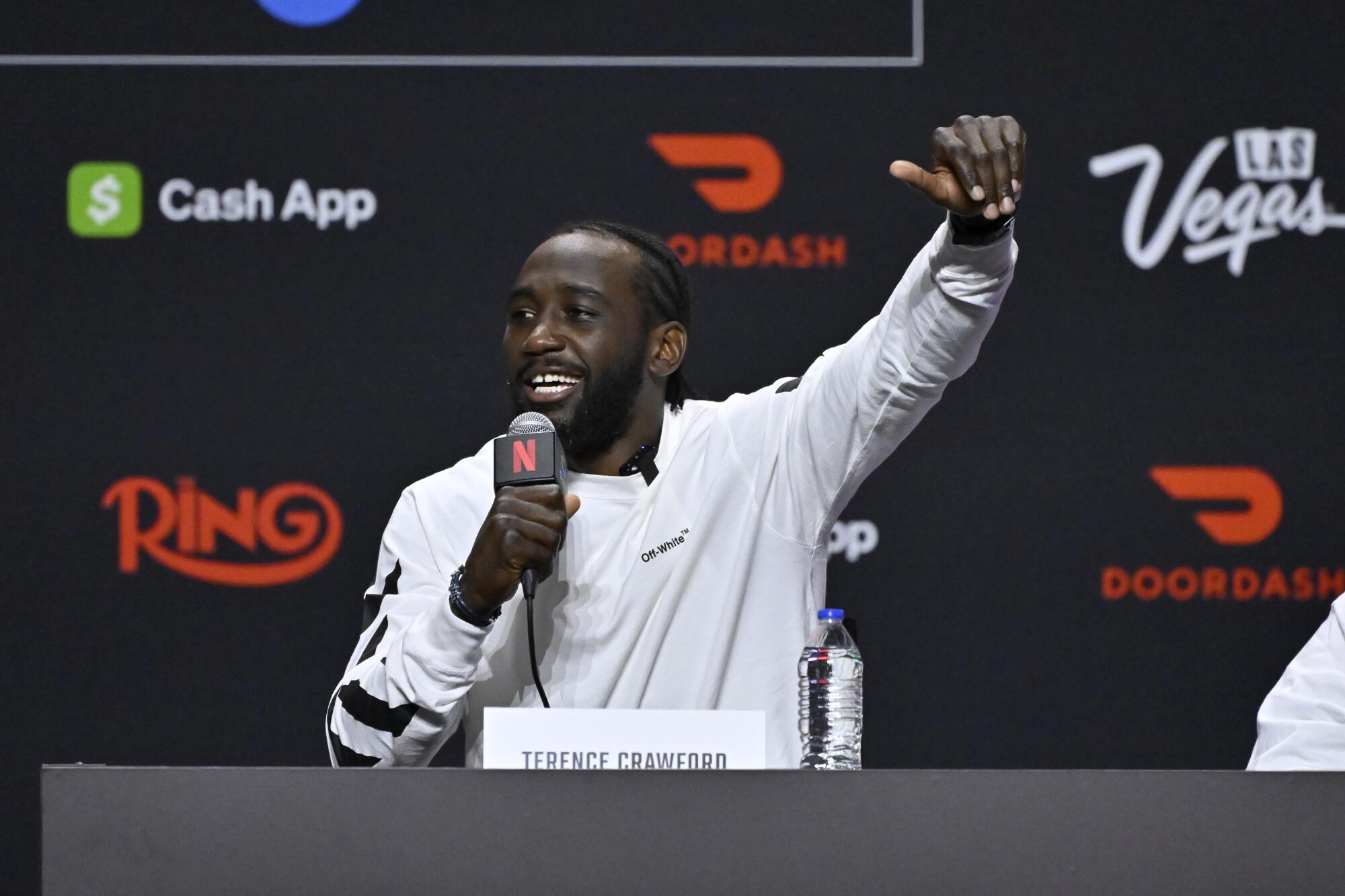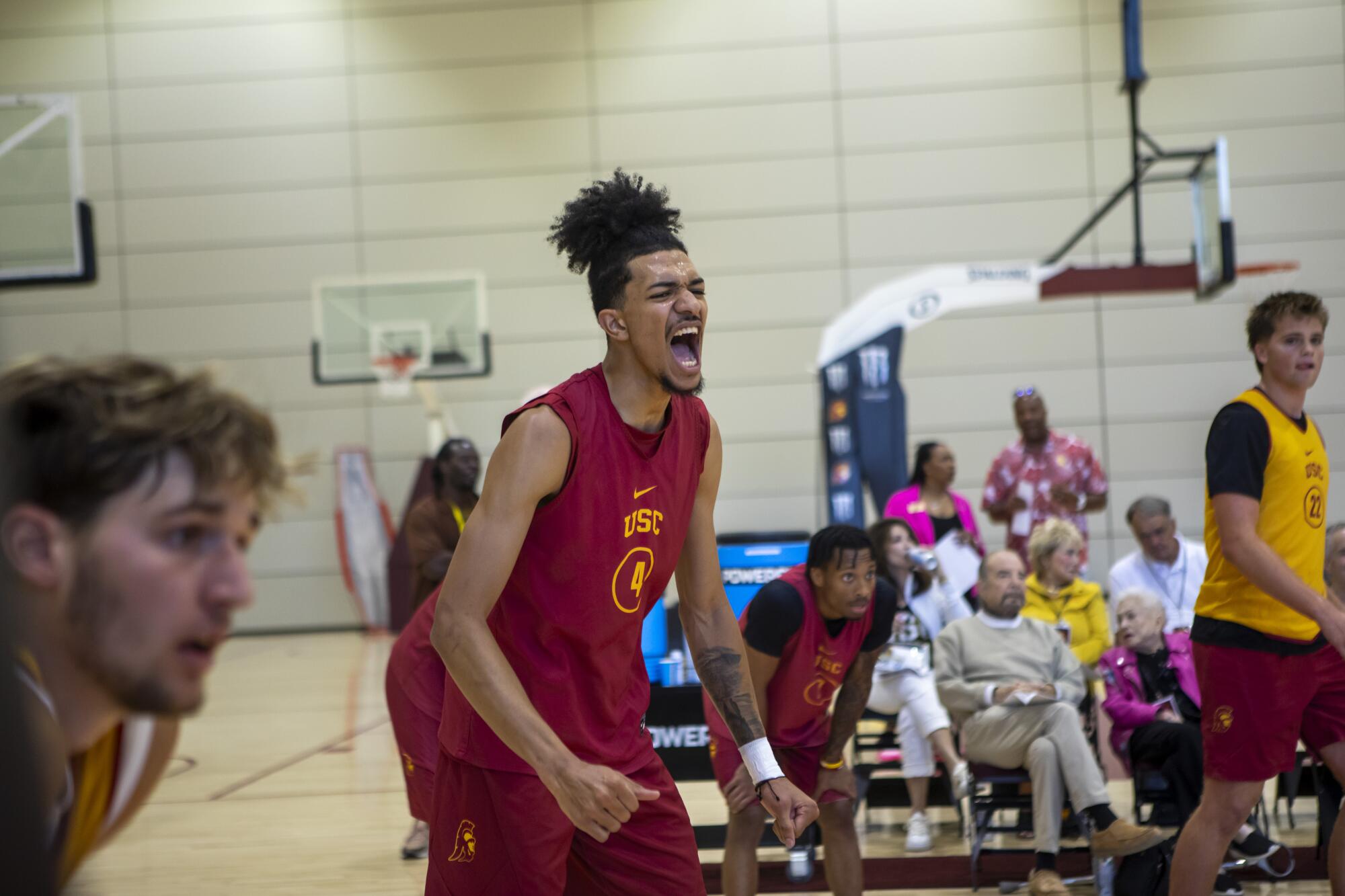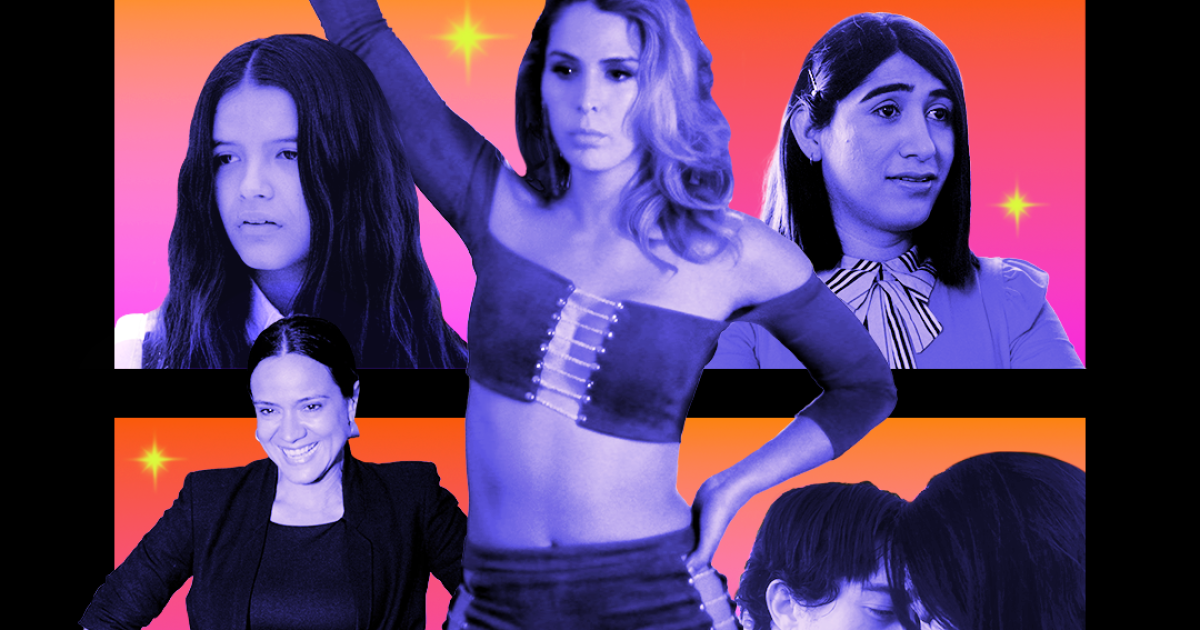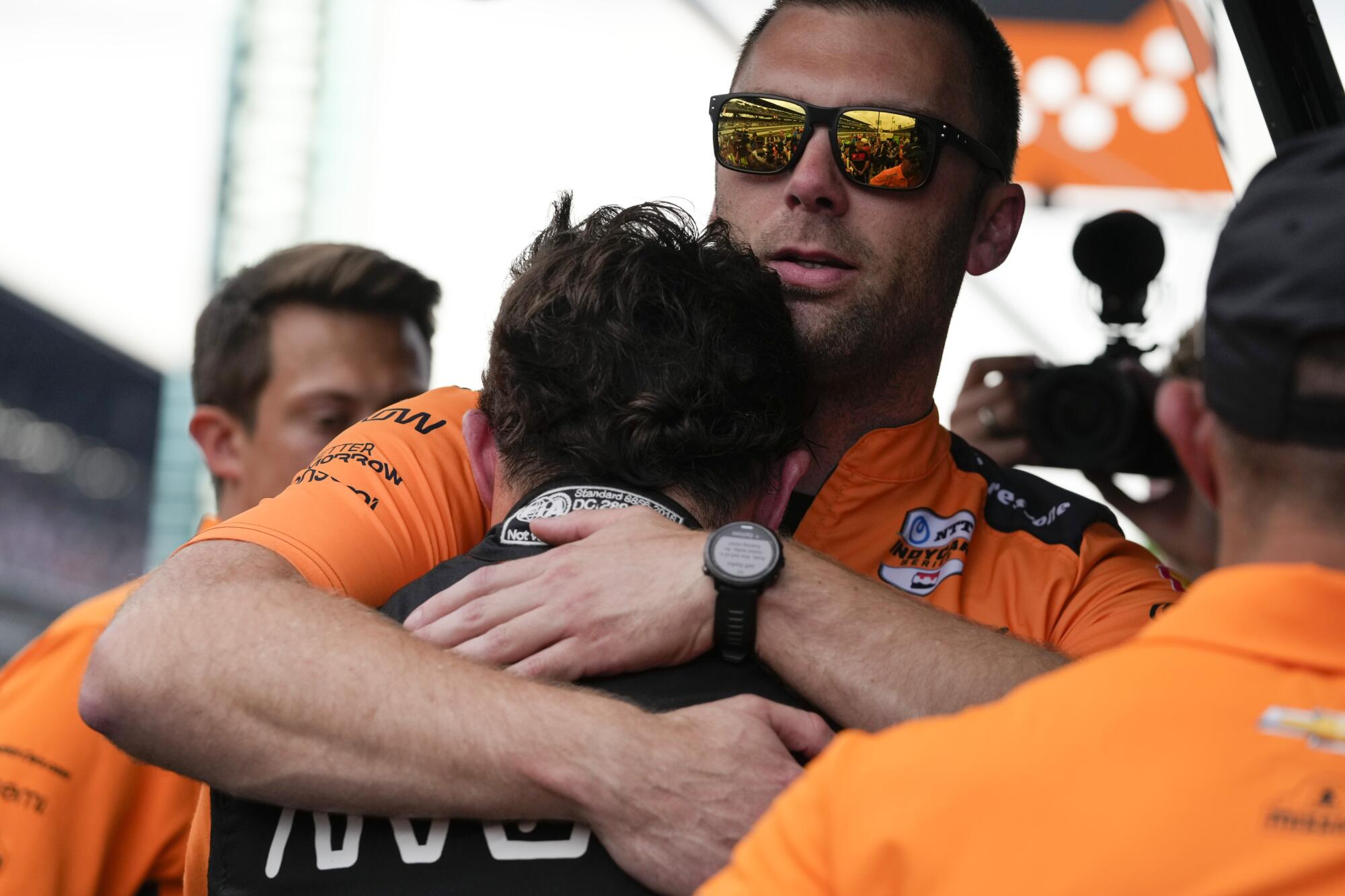Canelo vs. Crawford: An era-defining fight with legacies at stake
LAS VEGAS, Nevada — Terence “Bud” Crawford jumped two weight classes to set a career high on the scales at Friday’s weigh-in ahead of his super middleweight bout against Mexican superstar Saúl “Canelo” Álvarez. Both fighters weighed in at 167.5 pounds and met all the requirements for a fight that pits two of today’s best pound-for-pound boxers against each other.
Bud and Canelo face off Saturday at Allegiant Stadium in Las Vegas (6 p.m., Netflix) in a clash that will define their legacies, test Crawford’s undefeated status and determine supremacy in the sport.
For Álvarez, who will celebrate 20 years in the sport in October and compete in his 21st fight in Las Vegas when he faces Crawford, the weigh-in was business as usual for a Mexican star accustomed to competing in the super middleweight class and higher.
Crawford arrived in the same physical condition as the undisputed champion, reflecting the seriousness of his preparation in pursuit of the four belts held by the Jalisco native, as well as a bonus from the World Boxing Council (WBC), which will award a special ring to the winner of the fight.
Terence “Bud” Crawford extends his arms and during a news conference at T-Mobile Arena on Thursday in Las Vegas.
(David Becker / Getty Images for Netflix)
“I think people completely underestimate me, but that doesn’t matter,” Crawford said. “We have to fight here on Saturday, and all the answers will be resolved that night.”
The fighters participated in news conferences during the week that served as a barometer for the atmosphere in Las Vegas, where Álvarez is expected to draw a rowdy crowd during Mexican Independence Day weekend.
“I feel great. For me, this fight means a lot. I’m looking forward to Saturday night,” Álvarez said. “This fight is very important to me. It’s one of the most important fights of my career. … This victory will be one of the most important.”
Álvarez acknowledged Crawford’s physique, with his challenger surprising observers with more defined muscles after gaining weight.
“For me, muscles mean nothing,” Álvarez said. “I’ve fought bigger fighters before and they mean nothing… When I saw that he had a good training camp, I was happy because it was going to be a good fight.”
For his part, Crawford was confident and defiant.
“I feel great. I’m ready to get started. To surprise the world,” said the American, who reacted to social media comments about his physical transformation. “A lot of people are going overboard with that. ‘Oh, he’s slow, he’s got too much muscle.’ I just want to fight.”
At this crossroads, two fighters with different backgrounds meet. Both have been undisputed champions in different divisions and both have enough experience to handle the pressure of a big night. But there are differences that could tip the scales.
Canelo Álvarez and Terence Crawford face off onstage during news conference at T-Mobile Arena on Thursday in Las Vegas.
(David Becker / Getty Images for Netflix)
Álvarez is a fighter accustomed to the higher divisions. He has fought in light heavyweight and has faced physically superior opponents.
His style is orthodox, with a great ability to cut off the ring, wear down his opponents and land powerful punches that can define fights. He has the ability to adapt, read his opponents and subdue them with a combination of technique, power and tactical discipline.
Crawford comes from the opposite camp. His career has been built in lighter weight classes, dominating as a welterweight and lightweight, with a style based on mobility, variety of angles and intelligence in the ring. He is a natural southpaw, although he often switches stances, and has never tasted defeat as a professional.
With 41 victories, 31 of them by knockout, Crawford brings with him an impeccable record, but he will have to prove whether that power remains intact against a heavier and more resilient opponent such as Álvarez.
Crawford has had to deal with criticism about his previous opponents, as he has been accused of facing lower-quality fighters. “Anyone can be a nobody. And from what they say, I haven’t fought anyone,” he said.
The question is how Crawford will adapt to this new weight class. The increase in muscle could take away his speed, one of his most lethal weapons, or sap his endurance during long rounds.
For Álvarez, the advantage lies in familiarity, as he knows how to manage his body during a fight at 168 pounds, knows how to manage energy and knows how to punish an opponent who is entering unknown territory.
Many point to age as a factor that could affect both fighters during the bout.
At 35, Álvarez is still in a competitive range where he retains power, endurance and reflexes, although perhaps with less spark than in his 20s. His style does not depend so much on explosive speed, but rather on experience and the progressive wear and tear of his opponent. That works in his favor.
Although Álvarez has promised a knockout, in his recent fights, he has been unable to deliver knockouts and is unlikely to do so against Crawford.
“I’m going to give it my all in this fight and you’re going to see all my qualities,” Álvarez said. “It’s very difficult to say [which round I’ll knock him out], but I’m preparing for anything and I have one of the best fighters facing one of the best as well.”
At 37, Crawford is nearing the end of his physical prime. Boxers who base much of their style on speed, mobility and reflexes tend to feel the passage of time sooner. Crawford still looks fast, but his reflexes are probably not exactly what they were four or five years ago.
The fight, then, is shaping up to be a duel of styles and contexts. If Crawford manages to impose distance and take advantage of his mobility, he can turn the night into an exercise in frustration for Álvarez. If the Mexican manages to close the ring, press with body shots and wear Crawford down from the early rounds, the fight could swing in his corner.
Beyond the technical analysis, motivation plays a key role. Álvarez, with more than 60 professional fights, seeks to reaffirm his place in history as one of the great champions of Mexico and the world.
Crawford, meanwhile, wants to be the first male boxer in the four-belt era to become the undisputed champion in three different divisions.
Both know they are in the final stretch of their careers, which makes this fight an almost unrepeatable event. A defeat for either of them does not mean the end, but it would leave a mark on their records that would be difficult to erase.
When asked about fighting at Allegiant Stadium, home to the NFL’s Raiders, Crawford took a moment to emphasize the value of an event of this magnitude.
“Fights like this help boxing grow … the best fight,” he said. “… It’s only going to improve the sport.”
Undercard adds intrigue
Undefeated junior middleweight boxers Callum Walsh, left, and Fernando Vargas Jr., right, face off during a news conference at T-Mobile Arena on Thursday in Las Vegas while UFC’s Dana White looks on.
(Steve Marcus / Getty Images)
Saturday night’s fireworks aren’t limited to the main event. The rest of the card also is generating interest.
Undefeated super middleweight Christian Mbilli will face Guatemala’s Lester Martinez in a clash that promises to be intense.
Mbilli, who is hungry to establish himself in the division, said he feels he is in the best shape of his career and intends to go for a knockout. Martínez, for his part, has repeatedly said that he is not here to be a stepping stone for anyone and will take advantage of the platform to make a statement.
Another attraction is the clash between Callum Walsh and Fernando Vargas Jr., son of former world champion Fernando Vargas. Walsh, considered one of the promising young talents of Irish boxing, has said he will bring his technical and disciplined boxing style to the ring.
“Nothing compares to this weekend,” Walsh said. “It’s going to be a good fight. … None of us want to lose. It’s rare to see a fight like this in boxing: two young, undefeated boxers. Boxing needs more of this.”
Vargas said he is not intimidated and promised to prove that he belongs at this level of competition.
“He comes in as the favorite. … It’s something that excites me, something I’ve never felt before,” Vargas said. “Having my back against the wall. … You don’t see fighters putting their records on the line, 17-0 and 14-0, on a stage as big as this. These are the fights that make great fighters.”
Weigh-in results
MAIN CARD
Super middleweight: Canelo Álvarez (167.5 lbs) vs. Terence Crawford (167.5 lbs)
Super welterweight: Callum Walsh (153.5 lbs) vs. Fernando Vargas Jr. (153 lbs)
Super middleweight: Christian Mbilli (167 lbs) vs. Lester Martínez (167 lbs)
Lightweight: Mohammed Alakel (132 lbs) vs. Travis Crawford (132.5 lbs)
PRELIMS
Middleweight: Serhii Bohachuk (155 lbs) vs. Brandon Adams (156 lbs)
Heavyweight: Ivan Dychko (239.5 lbs) vs. Jermaine Franklin Jr. (256 lbs)
Super featherweight: Reito Tsutsumi (129.5 lbs) vs. Javier Martínez (129.5 lbs)
Super lightweight: Sultan Almohammed (132.5 lbs) vs. Martín Caraballo (133 lbs)
Light heavyweight: Steven Nelson (171.5 lbs) vs Raiko Santana (171.5 lbs)
Super middleweight: Marco Verde (158 lbs) vs. Sona Akale (159.5 lbs)
This article first appeared in Spanish via L.A. Times en Español.




